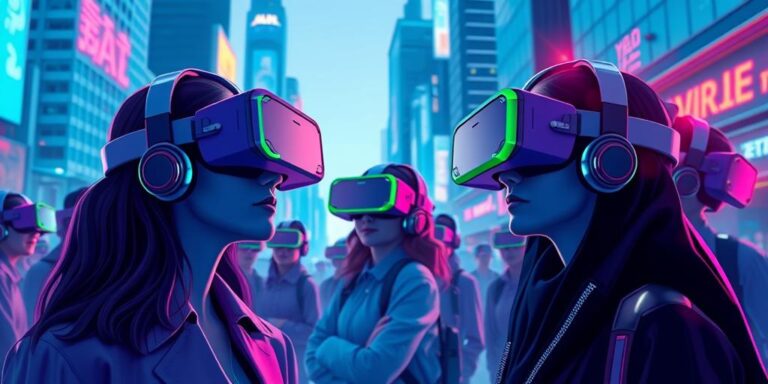Brain-Computer Interfaces for Controlling AR/VR (2030 Vision)
Imagine a world where you can control augmented reality (AR) and virtual reality (VR) environments with your mind. No more clunky controllers or awkward hand gestures. By 2030, brain-computer interfaces (BCIs) might make this a reality. BCIs offer a revolutionary way to interact with technology, and their potential applications in AR/VR are staggering.
What are Brain-Computer Interfaces?
Brain-computer interfaces are systems that allow direct communication between the brain and an external device. They work by recording brain activity, analyzing it, and translating it into commands that a computer can understand. There are two main types of BCIs:
- Invasive BCIs: These require surgical implantation of electrodes into the brain. They offer high precision and signal quality but come with risks associated with surgery.
- Non-invasive BCIs: These use sensors placed on the scalp, like EEG (electroencephalography) headsets. They are safer and more accessible but generally have lower signal resolution.
Current State of BCI Technology
While BCIs are still in their early stages of development, significant progress has been made in recent years. Companies like Neuralink and OpenBCI are pushing the boundaries of what’s possible. Current BCI applications include:
- Medical applications: Helping paralyzed individuals control prosthetic limbs or communicate.
- Gaming: Allowing players to control game characters and interact with virtual worlds using their thoughts.
- Research: Studying brain function and developing new treatments for neurological disorders.
BCI Control of AR/VR: The 2030 Vision
By 2030, BCIs could be seamlessly integrated into AR/VR systems, offering a more intuitive and immersive experience. Here’s what that future might look like:
Enhanced Immersion
BCIs could allow users to interact with AR/VR environments in a more natural and intuitive way. Instead of using controllers, users could simply think about an action, and the system would respond accordingly. Imagine:
- Reaching out to grab a virtual object just by thinking about it.
- Navigating a virtual world with your thoughts, without the need for joysticks or controllers.
- Experiencing emotions and sensations in VR that are directly linked to your brain activity.
Personalized Experiences
BCIs could also be used to personalize AR/VR experiences based on individual brain activity. The system could learn your preferences and adapt the environment accordingly. For example:
- Adjusting the difficulty of a game based on your cognitive load.
- Creating personalized learning experiences that cater to your individual learning style.
- Providing real-time feedback on your mental state, helping you to improve focus and reduce stress.
New Forms of Interaction
BCIs could unlock new forms of interaction that are simply not possible with traditional input devices. Imagine:
- Collaborating with others in VR using only your thoughts.
- Creating art or music in VR using your brainwaves.
- Exploring virtual worlds in a way that feels completely natural and intuitive.
Challenges and Opportunities
While the potential of BCIs in AR/VR is enormous, there are also significant challenges that need to be addressed:
- Technical challenges: Improving the accuracy and reliability of BCI technology.
- Ethical concerns: Ensuring user privacy and preventing misuse of the technology.
- Accessibility: Making BCIs affordable and accessible to everyone.
Despite these challenges, the opportunities are vast. By overcoming these hurdles, BCIs could revolutionize the way we interact with technology and open up new possibilities for AR/VR applications.
Long-Tail Keyword Variations
- “Brain-computer interface VR control”
- “AR gaming with brain-computer interface”
- “Future of VR brain control 2030”
- “Non-invasive BCI for augmented reality”
- “BCI applications in virtual reality training”




